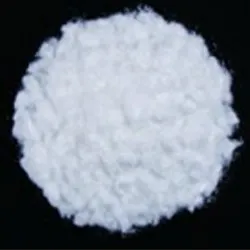
Benzotriazole CAS 95-14-7 | High Purity Corrosion Inhibitor
1,2,3–benzotriazole (BTA): the quiet workhorse UV stabilizer the industry leans on
I’ve watched light stabilizers go from “nice-to-have” to absolutely non‑negotiable in plastics, coatings, and rubber. And, to be honest, BTA keeps popping up in the most unassuming spec sheets—doing heavy lifting without drama. From automotive clearcoats to indoor housings that sit under brutal LED lighting, the material quietly soaks up UV and delays that dreaded chalking, yellowing, and embrittlement.

What’s new on the market
Two currents define the moment: tougher weathering specs (think ISO 4892 cycles getting longer) and sustainability pressure—longer service life equals fewer replacements. Many customers say the latest BTA grades integrate more cleanly with PC/ABS and PU coatings, and it seems that dispersion issues are rarer than five years ago. Surprisingly, demand stays hot in electronics, where enclosure aesthetics matter just as much as dielectric performance.
1,2,3–BTA at a glance (technical snapshot)
| Parameter | Typical spec (≈, real‑world may vary) |
|---|---|
| Purity (HPLC) | ≥ 99.5% |
| Appearance | White to off‑white crystalline powder |
| Melting point | ≈ 96–99 °C |
| UV absorbance λmax | ≈ 275–305 nm (broad shoulder into 340 nm) |
| Solubility | Low in water; good in alcohols, ketones, aromatics |
| Recommended dosage | 0.1–0.5 phr in plastics; 0.2–1.0% in coatings |
Process flow and QC (how it’s typically done)
Materials: o‑phenylenediamine derivatives + nitrosating agents → cyclization to BTA core → refining and controlled crystallization. Methods: solvent purification, activated carbon decolorization, vacuum drying. Testing standards: UV‑Vis per ASTM E275, purity via HPLC, volatile content (LOD), ash, and accelerated weathering in QUV chambers per ASTM G154 / ISO 4892‑3. Service life impact: in PC/ABS housings, BTA can cut ΔE color shift by 30–60% after 1,000 h QUV, depending on pigment and resin package.
Where it earns its keep
- Plastics: PC, ABS, PVC, TPU; injection-molded outdoor parts.
- Coatings: automotive clear, industrial topcoats, coil coating primers.
- Rubber and elastomers: seals, gaskets exposed to UV and heat.
- Adhesives/inks: color retention and substrate protection.
Vendor snapshot and customization
Origin for this SKU: 3-2-501, North Courtyard, West District, Jiuli Courtyard, Yuhua District, Shijiazhuang City, Hebei, China. The maker offers tailored particle size, low-odor grades, and bespoke packaging (≤ 25 kg fiber drums, foil liners). Certifications commonly requested: ISO 9001, REACH registration, RoHS compliance.
| Vendor | Purity | Lead time | Customization | Certs | Notes |
|---|---|---|---|---|---|
| Tenger Chemical (BTA) | ≥99.5% | 7–12 days | Particle size, packing, assay | ISO 9001, REACH, RoHS | Good tech docs and QUV data |
| Vendor A | ≥99.0% | 10–15 days | Limited | REACH | Budget option |
| Vendor B | ≥99.3% | 14–20 days | Yes | ISO 9001 | MOQ ≈ 500 kg |
Case notes and real feedback
Case 1: PC/ABS telecom enclosure in Southeast Asia—after 1,000 h QUV (ASTM G154, Cycle 1), ΔEab improved from 3.8 (control) to 1.9 with BTA at 0.3 phr; gloss retention at 60° went from 71% to 86%. Case 2: 2K PU clearcoat for agricultural equipment—chalking rating improved one grade under ISO 4628 after ISO 4892‑3 exposure. One coatings manager told me, “color drift flattened out nicely; no surprises in extrusion either.”
Compliance and safety
BTA offerings typically align with REACH and RoHS. Always verify CoA and SDS. For incoming QC, I recommend: HPLC assay, UV‑Vis spectrum match, moisture (≤0.2%), and a small‑scale dispersion test in your exact resin—sounds obvious, but saves weeks later.
Author’s note: If you work around copper alloys, benzotriazole is also known for metal passivation—handy in niche coating stacks. But here, we’re focused on its role as a light stabilizer.
References
- ASTM G154: Standard Practice for Operating Fluorescent UV Lamp Apparatus for Exposure of Nonmetallic Materials.
- ISO 4892-3: Plastics — Methods of exposure to laboratory light sources — Fluorescent UV lamps.
- ASTM E275: Standard Practice for Describing and Measuring Performance of Ultraviolet and Visible Spectrophotometers.
- ECHA Substance Information: benzotriazole — regulatory and hazard overview.
-
What Is a Food Additive? Global Insights, Applications & Future TrendsNewsNov.24,2025
-
968 Sweetener: The Modern Solution for Health-Conscious SweeteningNewsNov.23,2025
-
Discover the Benefits and Uses of 965 Sweetener (Erythritol) | Tenger ChemicalNewsNov.23,2025
-
961 Sweetener - A Next-Gen Sugar Alternative for Health and IndustryNewsNov.23,2025
-
Understanding 960 Sweetener: The Modern Sugar Alternative for Health and IndustryNewsNov.22,2025
-
Everything You Need to Know About 955 950 Sweeteners – Benefits, Uses, and TrendsNewsNov.22,2025
-
953 Sweetener: Global Insights, Applications, and Future TrendsNewsNov.21,2025
Hebei Tenger Chemical Technology Co., Ltd. focuses on the chemical industry and is committed to the export service of chemical raw materials.
-

view more DiethanolisopropanolamineIn the ever-growing field of chemical solutions, diethanolisopropanolamine (DEIPA) stands out as a versatile and important compound. Due to its unique chemical structure and properties, DEIPA is of interest to various industries including construction, personal care, and agriculture. -

view more TriisopropanolamineTriisopropanolamine (TIPA) alkanol amine substance, is a kind of alcohol amine compound with amino and alcohol hydroxyl, and because of its molecules contains both amino and hydroxyl. -

view more Tetramethyl Thiuram DisulfideTetramethyl thiuram disulfide, also known as TMTD, is a white to light-yellow powder with a distinct sulfur-like odor. It is soluble in organic solvents such as benzene, acetone, and ethyl acetate, making it highly versatile for use in different formulations. TMTD is known for its excellent vulcanization acceleration properties, which makes it a key ingredient in the production of rubber products. Additionally, it acts as an effective fungicide and bactericide, making it valuable in agricultural applications. Its high purity and stability ensure consistent performance, making it a preferred choice for manufacturers across various industries.





